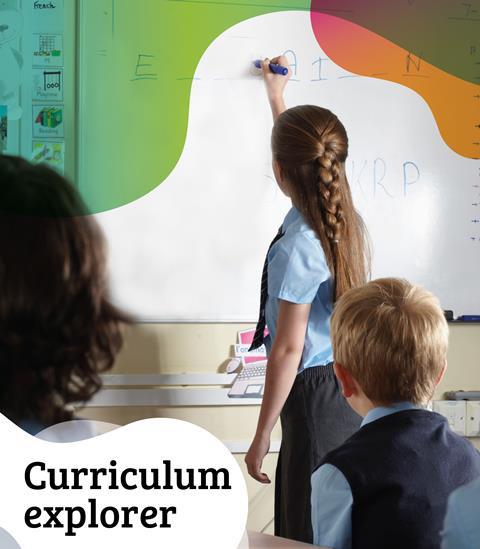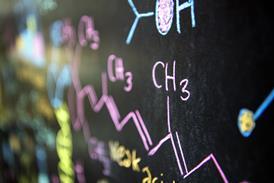All RSC Education articles in Non-EiC content – Page 4
-
 Resource
ResourceStates of matter | Johnstone’s triangle worksheets | 11–14 years
Use this worksheet to develop learners’ understanding of states of matter, including a teacher demonstration
-
 Resource
ResourceIsotopes of hydrogen | Johnstone’s triangle | 14–16 years
Use this worksheet to develop learners’ understanding of atoms and isotopes by considering ‘heavy water’ ice cubes
-
 Resource
ResourceAtoms and isotopes | Developing understanding | 14–16
Encourage learners to deepen their understanding of isotopes from the macroscopic to sub-microscopic level
-
 Extension
ExtensionIonic bonding and electron transfer | Stretch and challenge | 14–16 years
Learners evaluate and discuss ideas about ionic bonding, the formation of ions and energetics
-
 RSC News
RSC NewsColour Chemistry workshops inspire learners across Wales
Cross-curriculum workshops funded by RSC Outreach grants allow students of all ages to explore links between art and chemistry
-
 Resource
ResourceDecision tree: what type of bonding? | 14–16 years
Use this decision tree to help your learners find answers to questions about structure and bonding by scaffolding their thinking
-
 Resource
ResourceAtoms and ions | Developing understanding | 14–16 years
Encourage learners to think about how atoms and ions are represented and what this means at the sub-microscopic level
-
 Resource
ResourceAtoms and ions of copper | Johnstone’s triangle worksheets | 14–16 years
Use these worksheets to develop learners’ understanding of atoms and ions, including a demonstration of a metal displacement reaction
-
 Resource
ResourceDecision tree: acid, base or buffer? | 16–18 years
Help learners understand which equation they need to answer questions about acids, bases and buffers by scaffolding their thinking
-
 Resource
ResourceAtomic structure of lithium | Johnstone’s triangle worksheets | 14–16 years
Use these worksheets to develop learners’ understanding of atomic structure, using the example of lithium
-
 Lesson plan
Lesson planWriting formulas for ionic compounds | 14–16 years
Practise writing formulas for ionic compounds and revise common positive and negative ions, using this lesson plan with activities
-
 Resource
ResourceAtomic structure | Developing understanding | 14–16 years
Encourage learners to think about how the atomic structure is represented and what this means at the sub-microscopic level
-
 Resource
ResourceParticle diagrams and coffee shops | In context | 14–16
Put particle diagrams into context and practise maths in science with a visit to a coffee shop
-
 Resource
ResourceParticle diagrams | Knowledge check | 14–16
Assess learning on particle diagrams with worksheets at foundation and higher level
-
 Resource
ResourceThe structure of benzene | 16–18 years
Use this worksheet with classroom slides and card sort activity to explore the structure of benzene with your learners
-
 Lesson plan
Lesson planMetallic bonding and the structure of iron | Lesson plan | 14–16 years
Explore how the bonding in iron relates to its physical properties and address common misconceptions using this lesson plan with activities
-
 Resource
ResourceMetallic bonding in electric cars | In context | 14–16
Put metallic structure and bonding into context and practise maths in science with questions about electric cars
-
 Resource
ResourceMetallic bonding | Knowledge check | 14–16
Assess learning on metallic bonding with worksheets at foundation and higher level
-
 Resource
ResourceIonic structure and bonding | Knowledge check | 14–16 years
Assess learning on ionic structure and bonding with higher and foundation worksheets
-
 Resource
ResourceIonic structure and bonding in rubies | In context | 14–16 years
Put ionic bonding into context with questions about rubies, their composition and dazzling properties











